SingaporeMotherhood | Family Fun
May 2022
How to Get your Children to Tidy Up by themselves – and Enjoy doing it
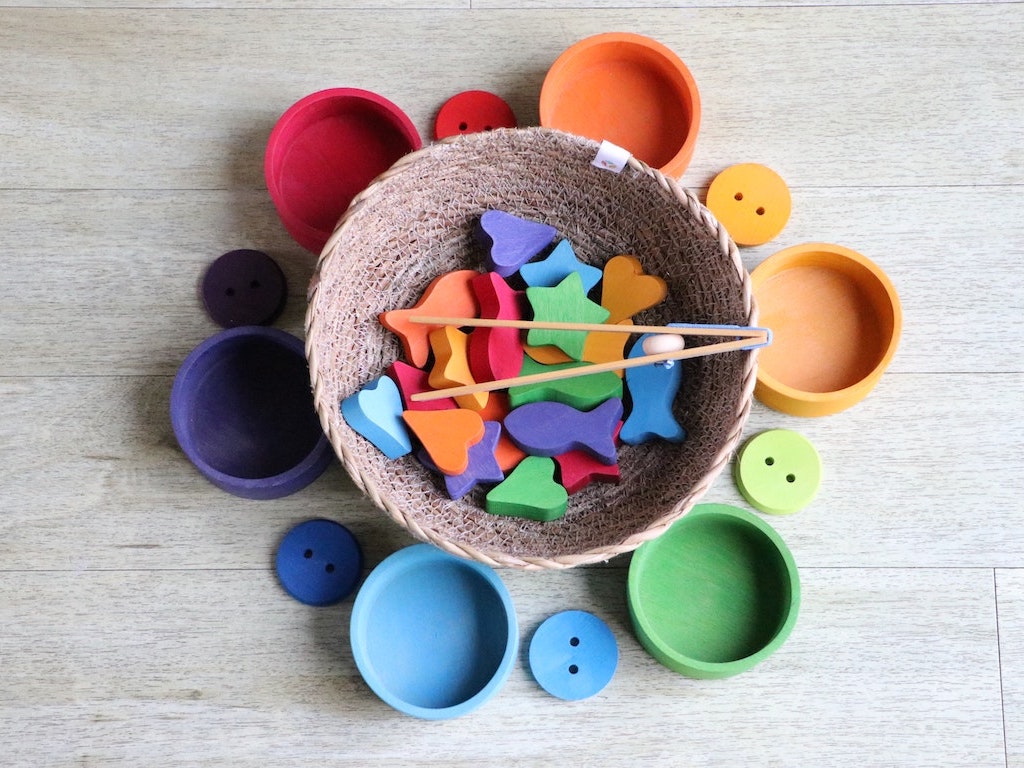
Are you a parent who is constantly nagging at your kids to tidy their room or study table? I was the same until it hit me that my kids, aged 6 and 10 this year, need to be taught how to tidy before they can actually do so. In my early years of motherhood, I felt overwhelmed most of the time. While I wanted to enjoy my kids, I found myself constantly trying to keep my home tidy and mess-free.
Once I put a home organisation system in place and taught my kids to stick to it, I could truly focus on what really matters. Since then, I’ve also taught my girls some key principles of tidying, and created a simple system for them to do so. They are now able to tidy their rooms independently.
The following are some tidying principles that I teach my kids. They are gender-neutral and can be taught to both our sons as well as our daughters. I hope you will find some of these principles, inspired by Marie Kondo’s book The Life-changing Magic of Tidying Up, useful for your family too.

Decide what to Keep; Discard with Gratitude
Before we teach our kids how to store their belongings, we first need to guide them in deciding what to keep and what to let go. I call this the “joy-checking process”. This first step is important as it reduces the risk of hoarding, which results in clutter.
Ask your children these questions to guide them in the joy-checking process:
- When was the last time you played with, used or wore this?
- Do you think you will play with, use or wear this again?
- How do you feel when you play with, use or wear this?
- What is so special about this item that makes you want to keep it?
- How much do you like this compared to the other one (a similar item that your kid really likes)?
(See also: House call Services in Singapore that Every Mum should know)
Once they decide to let something go, teach them to do this with gratitude – by saying “thank you” to the item. For things that they want to keep (even if we feel they should be discarded), respect their wishes and show that we care about the things that they love by finding a place to store them.
As our kids mature, their interests, tastes and preferences will also evolve. Periodically go through their items with them to decide what they still want to keep, and what they are ready to part with.
Store Similar items Together
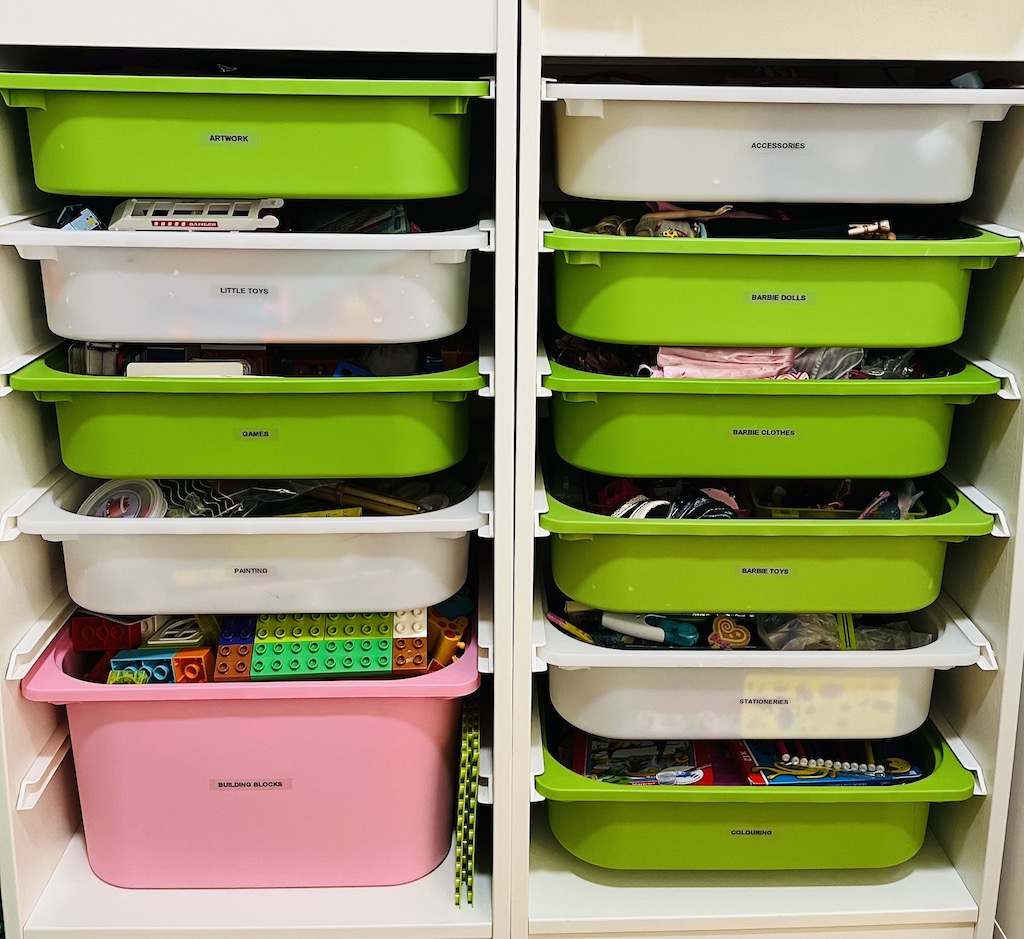
My daughters have a whole range of toys and other playthings ranging from building blocks to board and card games, dolls, craft tools, and more. Instead of randomly storing them away, I have taught them to store the same type of toys/items together. This way, they are able to find what they want more easily.
To do so, I got them shelves and designated specific trays for specific types of toys/items. I also have a specific tray for “little toys” and small miscellaneous items. For instance, those that my 6-year-old gets from birthday goodie bags or vending machines that dispense capsule toys. Over time, as the tray fills up, I go through the joy-checking process with her to decide what to keep.
Labelling these trays is useful, even if the kids already know where to store their items. This helps others living in the same household return the items to the right trays when necessary. You can start by buying shelves (let the kids choose the colours they want), and getting them involved in the labelling process.
Return each item “Home” after use
This is an important point to reinforce. Every item/toy needs a “home”, and should be returned “home” after use. This way, the chances of our kids losing an item at home will be greatly reduced. The adults will also get a better sense of what their kids have and how much of it is left, before deciding whether to replenish it, thus reducing the risk of clutter!
I also make it a point to use consistent language when it comes to tidying the kids’ belongings. These include: “Please return this to its home” or “Does this have a home? If not, let mummy know and we can decide where to house it”. This helps reinforce the principle that every item needs a “home” and should be returned “home” after use.
(See also: 7 Best Air Purifier options for Better Air in every Singapore Home (2022))
Use Small Boxes/Containers for Small items
This is something that I teach my 10-year-old who loves collecting stationery. Instead of throwing all her stationery into the drawer, she has learnt to store similar types together.
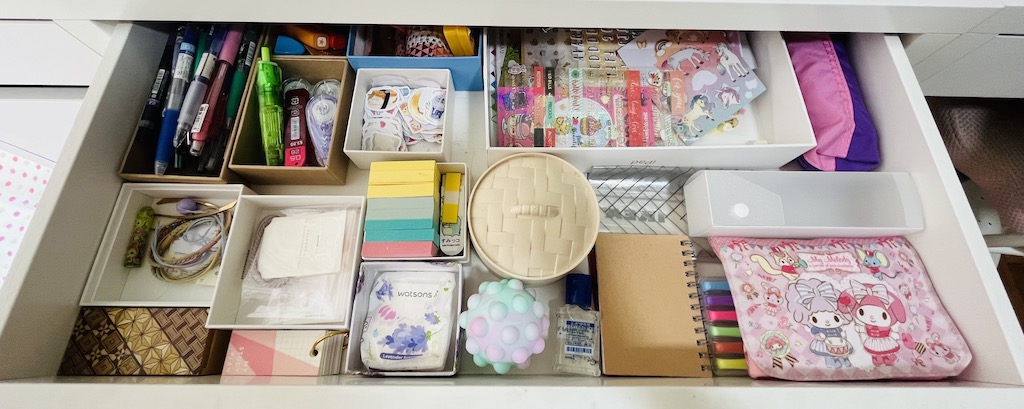
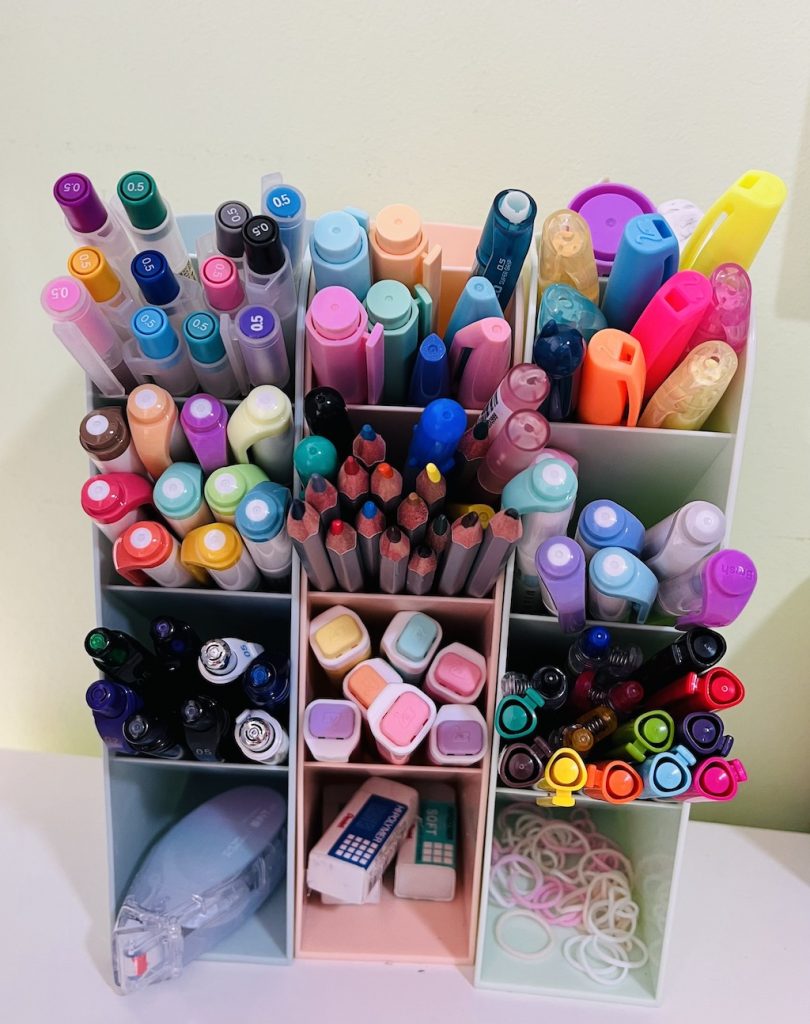
Here’s how she has organised her little items. I think it’s a pretty good effort for a 10-year-old!
Empowering our kids to organise their own items at this age gives them greater ownership of their belongings, and motivates them to keep their items in order for the long haul.
For my 6-year-old, she loves collecting accessories and dolling herself up with them. These range from hair clips to elastic hair bands, to rings, bracelets, necklaces etc. I used to chuck them into one container, but realised that this makes searching for a particular accessory, or its matching one challenging. Since then, we have compartmentalised them using trays with dividers.
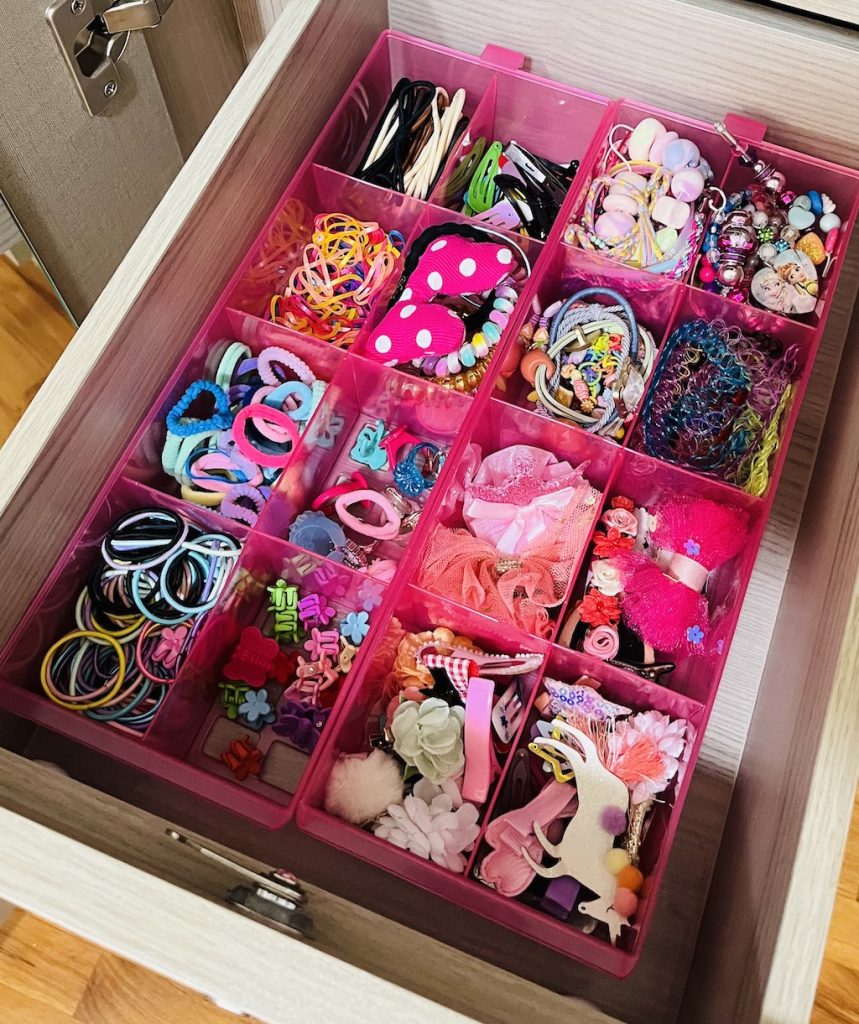
My 6-year-old now loves standing in front of these trays every morning, deciding what to don on herself today. You can start by finding reusable boxes that your kids can store their wares in. Whether for little trinkets or toy cars, these boxes will provide the much-needed structure for the organisation process.
Decorate with Items that make you Happy
I love to admire my girls’ drawings and building block creations. They are equally proud of them. So instead of storing them away, we choose a few that are particularly precious to display in their rooms. Looking at their creations makes us happy, and brings back fond memories of family time together.
I strongly recommend applying this principle for items that are sentimental or have special significance to our kids. Displaying them shows our kids that these items matter to us as much as they matter to them. It also teaches children to cherish their items more, while cultivating within them a spirit of gratefulness.
Ideally, I would love to display all my kids’ art pieces. However, given the rate that my 6-year-old is producing them, it is impossible to do so! Hence, I have started digitalising their art pieces, keeping physical copies only of those that mean more to us.
We keep these in a thick file, one for each child, and store the file away when it is full. I advocate simplicity when it comes to storing the kids’ artwork, as it becomes overwhelming when we over-categorise these items.
What about Books and Papers?
I store books by categories and designate a shelf space for each category. The categories of books that my children have are school books, assessment books, activity books, story books, and library books. Having a designated spot for each category makes it easier for the girls to find what they are looking for. In addition, they know where to return a book after reading it. I also keep their books on separate shelves, so they are individually accountable for keeping their shelves organised.
Most of the kids’ papers (other than their artwork) are school-related ones. These include test papers, practice papers, and assignment papers. We generally retain them for another school year and discard them thereafter. If the papers carry a special significance or need to be referred to, we file, and revisit them after a year.
(See also: 4 Ways to Organise the Kids’ Belongings at Home)
Make Tidying Fun for Kids
While we can impart tidying principles to our kids, putting in place an age-appropriate system for them is equally important. For instance, I would not expect my 6-year-old to fold and store each of her dolls’ clothes upright and neatly. It is fine so long as these are returned to the right tray. I want to make tidying easy and enjoyable so that she will grow up loving (rather than hating) it.
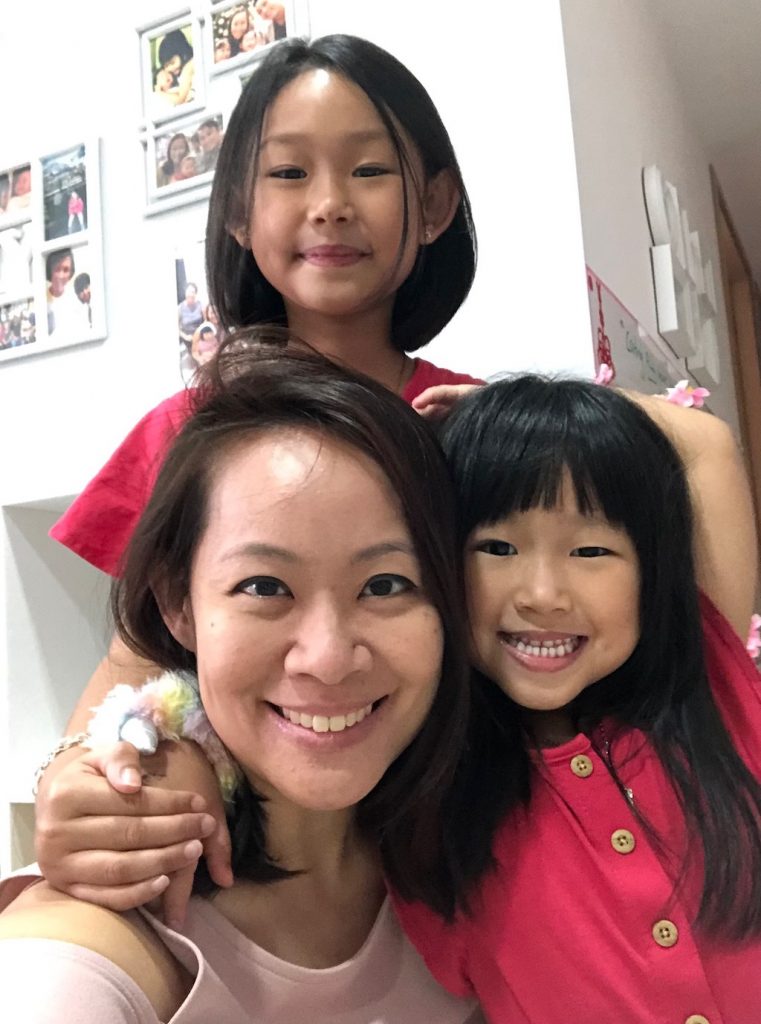
While my kids now know how to tidy, they may not always want to tidy. Creating the desire for our kids to tidy through positive reinforcement at home cannot be over-emphasised. Some praise and appreciation or a little treat goes a long way in motivating our kids to tidy up. What works for me is a reward structure that incentivises them to tidy up before they go to bed.
Finally, a healthy dose of sibling competition also helps! That said, there will be days when the kids just don’t feel like tidying up, or I would be rushing to put them to bed. On such days, I will either tidy up for them, or leave the mess to be sorted out the next day.
So don’t stress yourself too much if there are days that the kids’ rooms are messy. What’s more important is that our kids learn how to tidy, and are supported by an effective home organisation system. The rest is a matter of motivation.
Teaching our kids to tidy is one of the best gifts we can give them as parents. A tidy and organised space can positively impact our relationships at home, and allow us to focus on what truly matters.
Sharon Ho is a mother of two girls, founder of The Tidying Joy, and a certified KonMari® Consultant in Singapore.
All images: Sharon Ho, unless specified
Featured image: Soraya Irving on Unsplash
All content from this article, including images, cannot be reproduced without credits or written permission from SingaporeMotherhood.
Follow us on Facebook, Instagram, and Telegram for the latest article and promotion updates.





